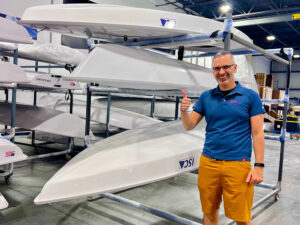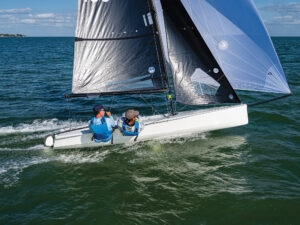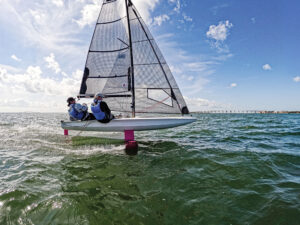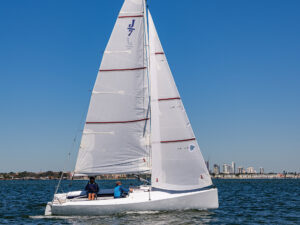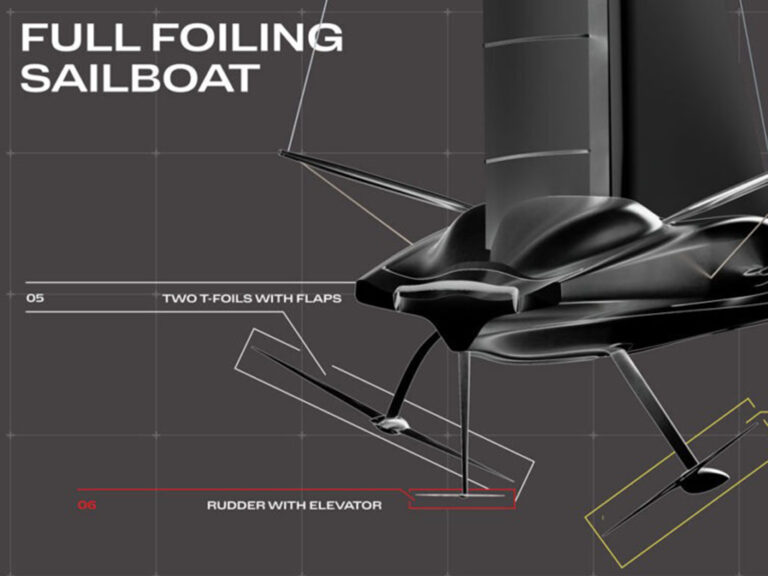
IC37
Since 2009, the New York YC has relied on privately-owned Club Swan 42s for its biennial signature event, the Rolex New York Yacht Club Invitational Cup, but with many of the 42s sold to overseas owners over the past few years, the club’s marquee marque regatta was in jeopardy of being without a fleet. It was time for action.
“For the Invitational Cup to be a continuous event, we determined that we needed to own the assets,” says Dr. Paul Zabetakis, who led a small committee, including Chairman of the Selection Subcommittee, Art Santry, through the yearlong selection process that resulted in the commissioning of the IC37.
By the spring of 2019, the club will own and manage a 20-boat charter fleet of these stripped-down 37-footers, a program that Zabetakis likens to Long Beach YC in California, which owns and uses Catalina 37s for its Congressional Cup, as well as Balboa YC (Calif.), which commissioned a fleet of 21-footers for its Governor’s Cup youth match-race regatta.
Early in the process, says Zabetakis, the club canvased its members and results confirmed little appetite for anything too big or too grand-prix. “It was apparent that younger members — in their 20s to 40s — are not buying [big] boats. Millennials don’t want to own anything — what’s called being ‘asset light,’” says Zabetakis. “So we determined that we need to own the boats.” Plus, he adds, having boats available to the membership, like their Sonars which are heavily used for team racing, provides another opportunity for members sitting on sidelines to get back into racing bigger boats. The driving factors behind the IC37, Zabetakis emphasizes, is to make the program work economically for the club, to protect the Invitational Cup, and get members back into boats, with charter fees covering the ongoing operating costs.
Through a vetting process, request for proposals went to a half-dozen select yacht designers, but word spread, and before long the committee had 19 proposals in hand. “That was our first indication we were on to something,” says Zabetakis. Through a voting process of elimination, they selected the design put forth by Mark Mills, of the UK.
The parameters were for a cost-conscious and low-maintenance boat sailed by seven or eight crew. It had to be fast, but stable enough to be sailed by a wide spectrum of individuals. One thing they were clear on from the outset was they didn’t want any semblance of an interior. Unlike the Swan 42, this is a raceboat, meant to be raced hard and put away wet. It’s bare below and flush decked, which allows a more efficient deck and sail-control layout for buoy racing.
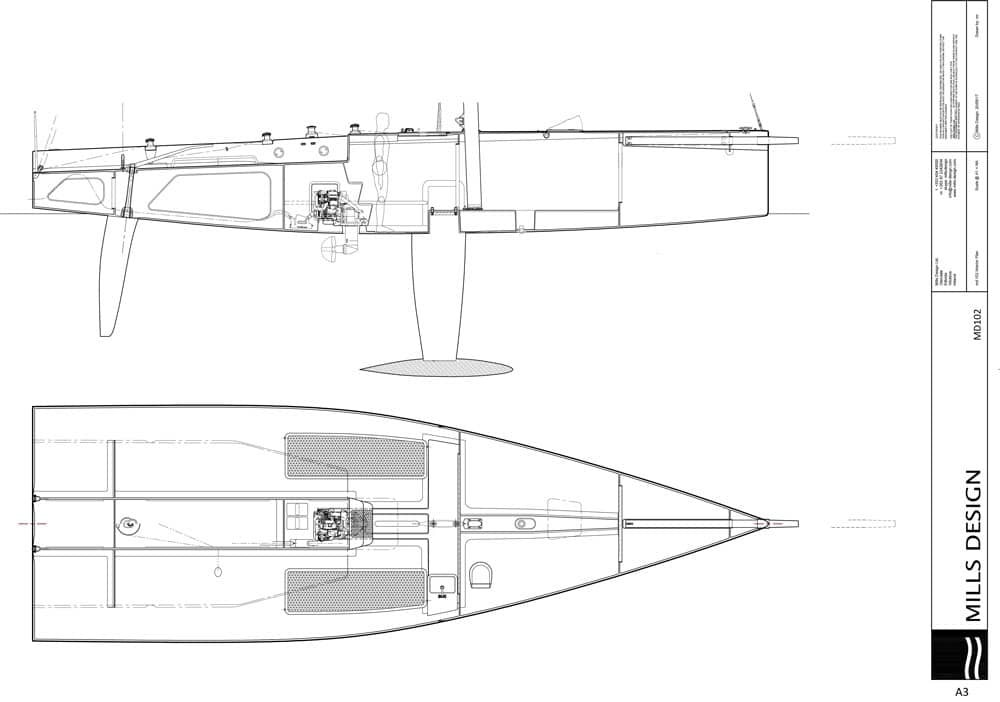
To avoid having hydraulic systems (for cost and maintenance issue) the group favored for a carbon rig with split backstays and square-top mainsail. Initially, the rest of the sail inventory will include one reef-able hanked jib, and one all-purpose spinnaker. With North Sails the official class sail supplier, upwind sails will be 3Di. Harken is the official hardware supplier. A mast jack and plate system will provide gross rig-tune adjustments, and simplified jib-sheet controls will be up/down, inboard, and fore and aft.
The standard electronics package doesn’t include any wind instruments; only GPS, VHF, and two mast displays for heading, boatspeed, and depth. The base boat price is $259,500 and charters will own their respective sail inventories.
The committee was also keen to have the boats built domestically, which proved to be a far greater challenge than commissioning the design, but ultimately led them to Westerly Marine in Santa Ana, California. Westerly, better known for custom builds and service work for the West Coast’s grand-prix set, but also built the Governor’s Cup 21s. With molds well underway in September, the first boat is expected out of Westerly by February 2018, and, should all go according to plan, the builder is tasked with delivering two boats per month thereafter.
The New York YC is fronting the startup costs of a long production run, anticipating buyers beyond its own clubhouse (a 100-plus boat fleet in the not-so distant future, says Zabetakis). Anyone can get in on the action, and to facilitate class management and marketing they’ve tapped Melges Performance Sailboats.
As far as managing its own IC37 fleet in Newport, Rhode Island, the club has an agreement in place with nearby New England Boatworks, which will serve as base of operations. A full-time charter program manager will care for the fleet and interface with members for charters. They expect to have four to six boats in 2018 to begin developing tuning guides and study the performance characteristics of this new one-design yacht. For the 2019, they expect to have the full 20-boat charter fleet on the line in time for the Rolex New York Yacht Club Invitational Cup. NYYC members will have access to a 2019 season-long charter program that will include five designated regattas.
The regatta charter operation is straightforward, not much different than a rental car, says Zabetakis. The boat will be prepped at NEB, launched before an event, and received by the charterer’s boat captain. The charterer assumes all regatta fees, a damage deposit and owns the sails. At the conclusion of the charter, the boat captain returns it to the manager, takes the sails off and delivers them to North Sails for storage or service. The fleet manager hauls the boat and preps it for the next regatta.
One-design class rules, which Zabetakis says mirror those of the Swan 42 Class Association, are being refined, but the essentials today have a maximum crew weight of 660 kilograms (1,455 pounds). If there’s eight or more crewmembers, two must be female; if seven, then one female, and if less than seven, no female required. There will be no weigh-ins, but the organizing authority can protest a team if it believes it to be out of compliance. As a Corinthian class, the only professional sailor allowed onboard for class racing is a “legitimate” boat captain. The boat captain, however, cannot helm, trim sails or call tactics.

